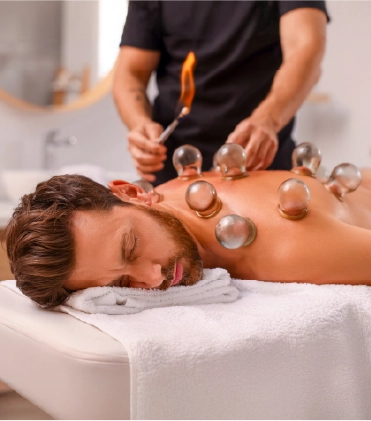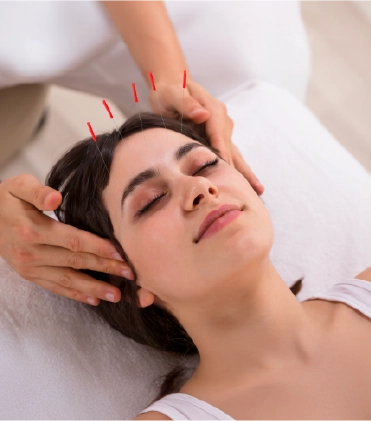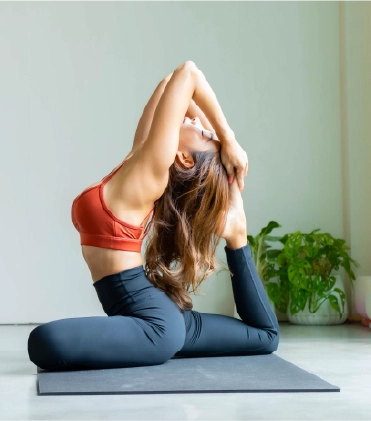What is the treatment?
Acupuncture is a traditional Chinese medical practice that involves inserting thin and sterile needles into specific points on the body to promote healing. Acupuncture is specifically performed to reduce pain and balance energy of the body which is also known as Qi. It is also very effective in managing stress levels. The practice of acupuncture is based on the concept of Qi or energy that flows through energy channels or meridians in the body. Acupuncture is performed on specific points to unblock the flow of energy. Physical therapists also use the acupuncture technique to block pain and stimulate nerves and muscles.
Philosophy/Origin
Acupuncture is a key component of Traditional Chinese Medicine (TCM) which has been performed for more than 2000 years. Acupuncture is based on the philosophy that the human body contains a vital energy (Qi) that flows through channels called meridians. When this flow of energy is disrupted, it can lead to illness and pain. Acupuncture techniques help to restore the balance of the energy within the body by removing blockages and stimulating the natural healing process of the body.
Physical Benefits
Mental/Emotional Benefits
Long-Term Wellness
Regular acupuncture sessions help to restore the balance of energy in the body which further reduces the chances of illness. It can improve sleep patterns and reduce the symptoms of insomnia by promoting relaxation and reducing stress.
Ideal Audience
People who prefer holistic treatment to treat pain instead of medications can benefit from acupuncture treatment. It is an ideal technique to treat mind, body, and soul. People who follow the practices of Traditional Chinese Medicine and holistic healing usually go for acupuncture.
Specific Conditions
The treatment of acupuncture consists of the following steps
Initial Consultation
During the initial consultation, a licensed acupuncturist takes the medical history of the individual including current symptoms and personal health goals. This thorough assessment is important to identify specific blocked energy channels and to plan the treatment accordingly.
Preparation and Positioning
After the consultation, the individual is directed to lie on a treatment table in a comfortable and relaxed position. The acupuncturist ensures that the areas designated for needle insertion are properly exposed and cleansed.
Insertion of Needles
The acupuncturist selects specific acupuncture points based on the area of pain. After that, thin needles are gently inserted into the skin at the identified points. The needles are designed to be so thin that most people feel minimal or no discomfort during the insertion.
Needle Stimulation
After the insertion, the acupuncturist performs manipulation techniques of the needles by rotating or applying light electrical pulses. This stimulates and activates the flow of Qi and restores balance.
Resting Period
The needles are left in place for approximately 20 to 30 minutes which allows the individual to enter a state of deep relaxation.
Needle Removal and Aftercare
After the resting period, the acupuncturist carefully removes the needles. Some therapists may offer gentle massage or apply heat therapy which further improves the experience of the individual.
What to Expect
During an acupuncture session, people may feel a mild tingling, warmth, or pressure at the needle insertion points, which is considered a sign of energy flow activation. Many people experience a feeling of release of tension and some even fall asleep. Acupuncture therapy can cause mild discomfort but it usually subsides after a few minutes and provides relaxation.
Immediate Effects
Long-Term Effects
Regular sessions can help manage chronic pain and inflammation over time. Consistent acupuncture can improve mood, reduce anxiety, and promote better emotional balance. Long-term acupuncture treatments can help strengthen the immune system and improve overall health.
Before the Treatment
It is advisable to eat a light meal before the session to prevent any discomfort during the session. Loose-fitting clothes are recommended to wear because of the easy access to the area involved. It is important to discuss any phobia of the needle before the session to avoid any complications.
Aftercare
It is better to rest after taking the session of acupuncture therapy and avoid any physical activity immediately after the treatment.
Acupuncture is widely performed in physical therapy departments and medical offices. Acupuncture techniques are being used all over the world including, the US, Canada, Japan, China, Korea, India, and Pakistan. Wellencia connects people to certified acupuncturists for their proper treatment and quality care.









